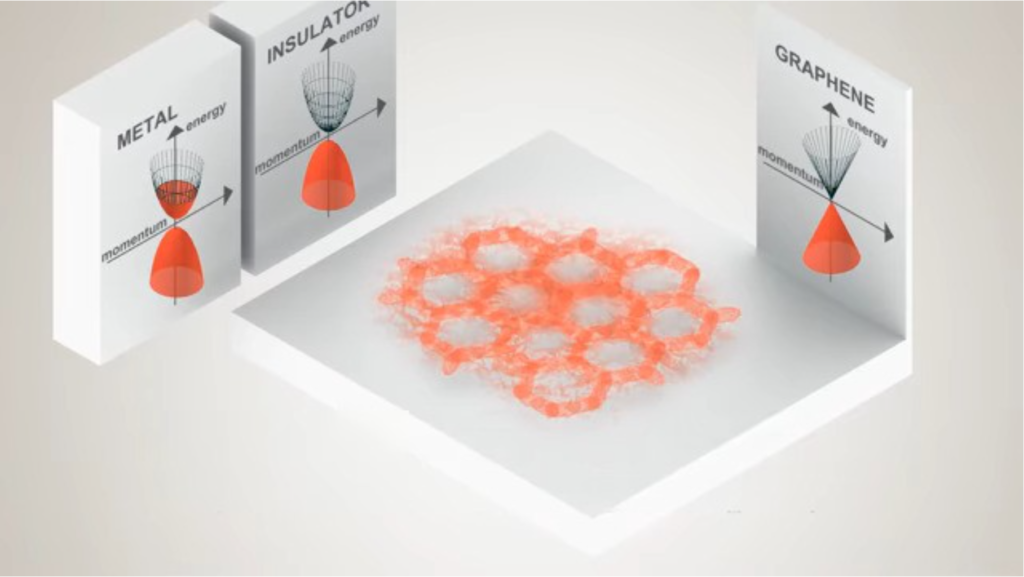
The theoretical study of graphene and other relativistic matter is one of the group’s vastest research fields. While the traditional model system (graphene) is still investigated, recently the main focus has shifted to materials beyond graphene. As an example one may invoke organic crystals (aI3) that depict tilted Dirac cones and that are investigated in close collaboration with the High-Presssure group at LPS. The above-mentioned relativistic aspects also govern the elec- tronic properties of Weyl semi metals that can be seen as the three-dimensional analogue of graphene. Another class of Dirac materials is that of transition-metal dichalcogenides, which are direct-gap semiconductors whose electronic properties are most likely described in terms of massive Dirac fermions. A particularly eld of interest is the interplay between the inevitable crystal defects and the electronic properties in Dirac and topological matter. Impurity states and anisotropic Friedel oscillations in graphene-like structures are representative examples.
(1) E. Tisserond, J.-N. Fuchs, M. O. Goerbig, P. Auban-Senzier, C. Mézière, P. Batail, … M. Monteverde.
Aperiodic quantum oscillations of particle-hole asymmetric Dirac cones. EPL (Europhysics Letters) 119, 67001 (2017).
(2) S. Tchoumakov, M. Civelli, & M. O. Goerbig. Magnetic-Field-Induced Relativistic Properties in Type-I and Type-II Weyl Semimetals. Physical Review Letters 117, 086402 (2016).
KEYWORDS:
- Relativistic Matter
- Dirac Cones
- Weyl semimetals
- Edge States
- Transition-metal dichalcogenides